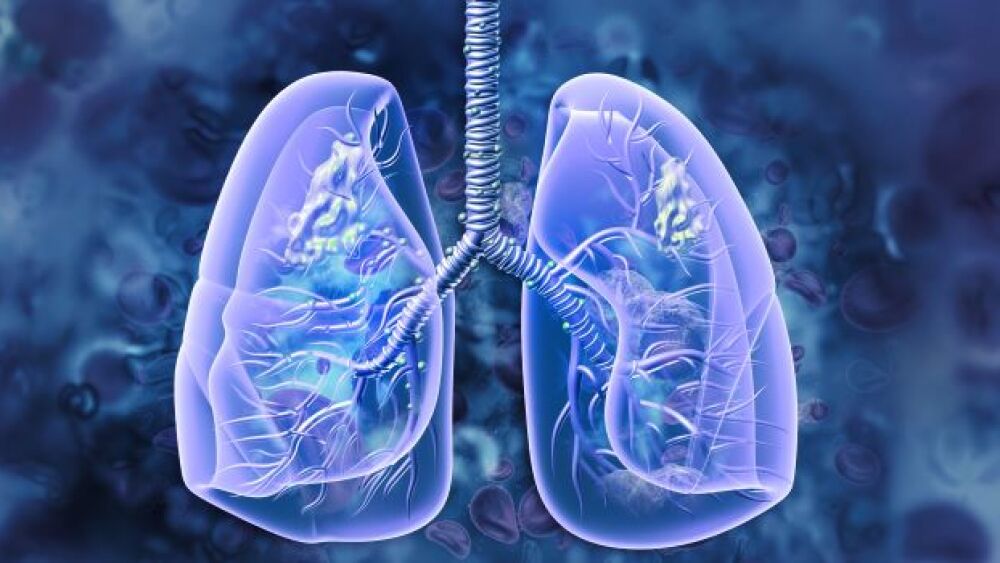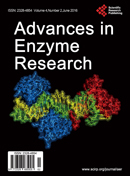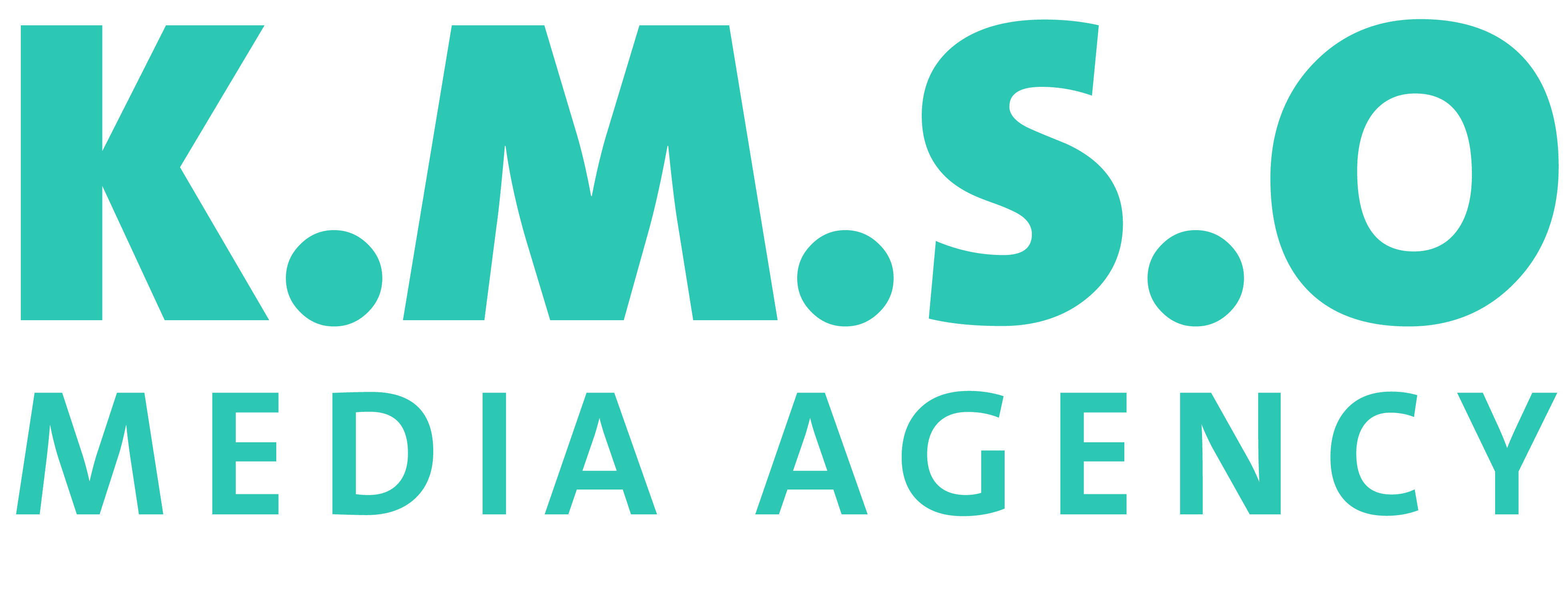
Cancer
19 hours ago
KMSO Doctor
Advances in Lung Cancer
PGRMC1 Elevation in Multiple Cancers and Essential Role in Stem Cell Survival, Advances in Lung Cancer, Vol.4 No.3, 2015
Kaia K. Hampton, Rachel Stewart, Dana Napier, Pier Paolo Claudio, Rolf J. Craven
Citations: 44 (Details)
CD8 T cell response in a phase I study of therapeutic vaccination of advanced NSCLC with allogeneic tumor cells secreting endoplasmic reticulum-chaperone gp96-Ig-peptide complexes, Advances in Lung Cancer, Vol.2 No.1, 2013
Luis E. Raez, Gail R. Walker, Paulette Baldie, Eva Fisher, Jorge E. Gomez, Khaled Tolba, Edgardo S. Santos, Eckhard R. Podack
Citations: 18 (Details)
Differentiation of Benign and Malignant Solitary Pulmonary Nodule: Literature Review, Advances in Lung Cancer, Vol.4 No.2, 2015
Suresh Tripathi, Xuqiu Zhen
Citations: 12 (Details)
Granulocyte Colony-Stimulating Factor Enhances the Anticancer Effects of Cisplatin against Lung Cancer by Promoting Angiogenesis, Advances in Lung Cancer, Vol.6 No.1, 2017
Yun-Mo Li, Yasushi Ohno, Norihiko Funaguchi, Takenobu Gomyo, Yuka Sasaki, Sayaka Toyoshi, Daizo Kaito, Komei Yanase, Junki Endo, Fumitaka Ito, Masanori Kawasaki, Shinya Minatoguchi
Citations: 12 (Details)
Supportive care needs and health-related quality of life among Chinese lung cancer survivors, Advances in Lung Cancer, Vol.1 No.2, 2012
Dorothy Ngo-Sheung Chan, Kai-Chow Choi, Carmen Wing-Han Chan, Rayman Wai-Man Wan, Suzanne So-Shan Mak, Eliza Mi-Ling Wong, Sek-Ying Chair, Winnie Kwok-Wei So
Citations: 11 (Details)
Heparin versus Saline Solution for Locking of Totally Implantable Venous Access Port (TIVAP): Cohort Study of the First Kurdistan Series of TIVAP, Advances in Lung Cancer, Vol.3 No.4, 2014
Aram Baram, Goran Majeed, Hazha Abdullah, Allaa Subhi
Citations: 11 (Details)
The Outcome of the Chemotherapy and Oncothermia for Far Advanced Adenocarcinoma of the Lung: Case Reports of Four Patients, Advances in Lung Cancer, Vol.4 No.1, 2015
Doo Yun Lee, Joon Seok Park, Hae Chul Jung, Eun Seol Byun, Seok Jin Haam, Sung Soo Lee
Citations: 9 (Details)
Prognostic Clinico-Pathological Features of 99 Cases Advanced Non-Small Cell Lung Cancer—Egyptian National Cancer Institute, Advances in Lung Cancer, Vol.4 No.3, 2015
Hala Aziz Shokralla, Mohamed Rahouma
Citations: 8 (Details)
Radiation-Induced Lung Cancers in Murine Models, Advances in Lung Cancer, Vol.3 No.2, 2014
Leena Rivina, Michael Davoren, Robert H. Schiestl
Citations: 8 (Details)
The bisulfite genomic sequencing protocol, Advances in Lung Cancer, Vol.2 No.1, 2013
Jane J. Pappas, André Toulouse, Walter Edward Clarke Bradley
Citations: 6 (Details)
Prognostic Significance of CD31 Expression in Patients with Non-Small-Cell-Lung Cancer, Advances in Lung Cancer, Vol.5 No.3, 2016
Alexander Emmert, Angelika Oellerich, Laszlo Füzesi, Regina Waldmann-Beushausen, Hanibal Bohnenberger, Friedrich A. Schöndube, Bernhard C. Danner
Citations: 5 (Details)
Clinicopathological Profile of Lung Cancers at an Institute from South India—A Record Based Retrospective Cohort Study, Advances in Lung Cancer, Vol.9 No.3, 2020
Vinod Ramani, Choudhury Bijit, Sarathy Vinu, Jayappa Srinivas Belagutti, Naik Radheshyam
Citations: 5 (Details)
A pilot double-blind, randomized, placebo-controlled trial of curcumin/bioperine for lung cancer chemoprevention in patients with chronic obstructive pulmonary disease, Advances in Lung Cancer, Vol.2 No.3, 2013
Amir Sharafkhaneh, J. Jack Lee, Diane Liu, Ruth Katz, Nancy Caraway, Cherise Acosta, Ignacio I. Wistuba, Bharat Aggarwal, Burton Dickey, Seyed J. Moghaddam, Nicola Hanania, Robert Newman, Hanan Abdel-Monem, Nga Bich Nguyen, Carol J. Farhangfar, Waun K. Hong, Jonathan M. Kurie
Citations: 4 (Details)
Circulating IgG antibody against FOXP3 may be a potential biomarker for lung cancer, Advances in Lung Cancer, Vol.2 No.4, 2013
Weili Wang, Leiguang Ye, Xiaomei Li, Songlei Guan, Shilong Sun, Meng Wang, Xueqing Guan, Kuang-Hui Lee, Jun Wei, Baogang Liu
Citations: 4 (Details)
Gingival Metastasis Revealing Lung Adenocarcinoma, Advances in Lung Cancer, Vol.3 No.2, 2014
Lamyae Amro, Leila Maliki, Badia Belabidia, Abdelhaq Alaoui Yazidi
Citations: 3 (Details)
Prognostic Role of miR-205 in Early-Stage (T1N0) Non-Small Cell Lung Cancer, Advances in Lung Cancer, Vol.3 No.2, 2014
Laura Boldrini, Mirella Giordano, Adele Servadio, Greta Alì, Alice Cocco, Marco Lucchi, Pietro Bertoglio, Franca Melfi, Alfredo Mussi, Gabriella Fontanini
Citations: 3 (Details)
Pulmonary metastasis from gastric cancer: A case report and review of literature, Advances in Lung Cancer, Vol.2 No.3, 2013
Motohisa Kuwahara, Mari Matsumoto, Kazuya Naritomi, Masae Mano, Daisuke Hamatake, Koji Inutsuka, Takayuki Shirakusa, Akinori Iwasaki
Citations: 3 (Details)
Missing the Target?—Targeted Therapy in
5
Read
Cancer
22 hours ago
Muhamad
Advances in Enzyme Research
Alternative Impact Factor
With respect to all articles from this journal for the respective year:
A = total cites in 2022 = 149
B = 2022 cites to articles published in 2020 - 2021 = 10 (this is a subset of A)
C = number of articles published in 2020 - 2021 = 13
2-GJIF for 2022 = D = B/C = 10/13 = 0.77 (TR algorithm, Google citations, data July 2024)
Please see also the List of Citations for AER. An impact factors for e.g. 2022 can only be published once this year is over (e.g. in 2023). At Clarivate Analytics (formerly Thomson Reuters) this is done when all 2022 publications have been processed. Once published, the JCR®JIF for a given year is fixed. In contrast, a GJIF has never a fixed value. Depending on individual activities on the Internet (self-archiving and Green Open Access), some articles published Closed Access in one year may appear online only months or even years later. This has an influence on Google Scholar's citation count and makes it necessary to state the 2-GJIF for a given year always with the date the data was retrieved from Google Scholar. SCIRP may provide updates of the 2-GJIF during the year. E = 2022 self-citations to articles published in 2020 - 2021 = 0 (this is a subset of B)
Self-Cited Rate = E/B = 0/10 = 0 % (definition Rousseau 1999, data July 2024) Journal self-citations are citations to articles in the same journal. A Self-Cited Rate below 20 % is considered acceptable. A higher Self-Cited Rate than this could be explained by a journal's novel or highly specific topic, but could also reveal a journal with excessive self-citations. Please interpret the 2-GJIF with caution:
• Due to differences in the underlying database, the value calculated here for the 2-GJIF can not be compared with a JCR®2-JIF.
• Do not compare journals from different subject fields based on their JIF. Journals in fundamental subject fields tend to have higher impact factors than journals in specialized or applied subject fields.
• Journal metrics should not be used to assess individual authors. Please refer instead to our article metrics provided for each paper: Number of citations from Google Scholar and number of citations from CrossRef. Statistics, Productivity, and Impact
Year in which journal started publishing = Y_start = 2013
Number of full years journal is publishing = Y = 10
Number of articles published since journal start = P_total = 91
Number of articles published in 2022 = P_2022 = 6
Total number of citations since journal start = C_total = 1226
Number of citations in 2022 = C_2022 = A = 149
Average number of citations per year = C_total/Y = 1226/10 = 122.6
Average number of citations per paper = C_total/P_total = 1226/91 = 13.5
with data from July 2024. For any further questions please feel free to contact [email protected].
6
Read
Leading academic platform that is exclusive
with medical publications and research
Health in Kurdistan, Iraq and the world
About
Sections